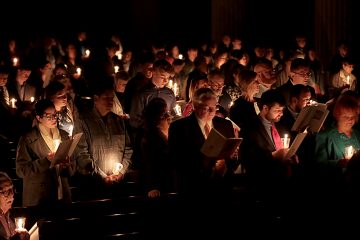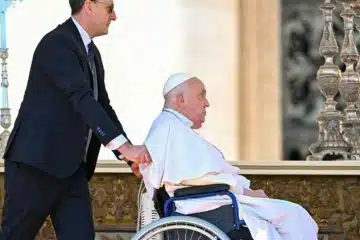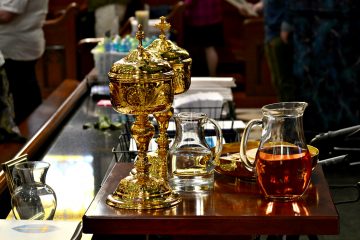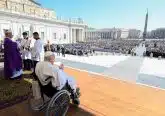The significance of Good Friday
“‘It is finished’; and he bowed his head and handed over his spirit.”
On Good Friday, the entire Church fixes her gaze on the Cross at Calvary. Each member of the Church tries to understand at what cost Christ has won our redemption. In the solemn ceremonies of Good Friday, in the Adoration of the Cross, in the chanting of the ‘Reproaches’, in the reading of the Passion, and in receiving the pre-consecrated Host, we unite ourselves to our Savior, and we contemplate our own death to sin in the Death of our Lord.
The Church – stripped of its ornaments, the altar bare, and with the door of the empty tabernacle standing open – is as if in mourning. In the fourth century the Apostolic Constitutions described this day as a ‘day of mourning, not a day of festive joy,’ and this day was called the ‘Pasch (passage) of the Crucifixion.’
The liturgical observance of this day of Christ’s suffering, crucifixion and death evidently has been in existence from the earliest days of the Church. No Mass is celebrated on this day, but the service of Good Friday is called the Mass of the Presanctified because Communion (in the species of bread) which had already been consecrated on Holy Thursday is given to the people.
Traditionally, the organ is silent from Holy Thursday until the Alleluia at the Easter Vigil, as are all bells or other instruments, the only music during this period being unaccompanied chant.
The omission of the prayer of consecration deepens our sense of loss because Mass throughout the year reminds us of the Lord’s triumph over death, the source of our joy and blessing. The desolate quality of the rites of this day reminds us of Christ’s humiliation and suffering during his Passion. We can see that the parts of the Good Friday service correspond to the divisions of Mass:
- Liturgy of the Word – reading of the Passion.
- Intercessory prayers for the Church and the entire world, Christian and non-Christian.
- Veneration of the Cross
- Communion, or the ‘Mass of the Pre-Sanctified.’













